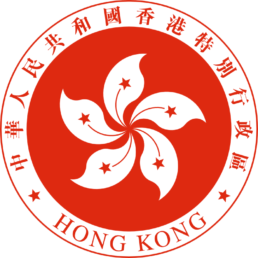The Asian megacity of Hong Kong is capitalizing on existing infrastructure and seawater to withstand future droughts caused by climate change.
Acknowledging future risks of reduced water availability, Hong Kong has adopted a Total Water Management Strategy to enhance water security and reliability. The project focuses not only on improving and expanding water resources but curbing demand as well.
To reduce demand, the city has conducted water loss management, including repairs and upgrades to water mains, lowering leakage rates. The city also encourages water conservation methods through collaboration, active participation, and mutual commitments between public, private, and civic sectors. In terms of supply, Hong Kong is expanding its already world-leading sourcing strategies. While the city has used seawater for toilet flushing for many years, as part of the Total Water Management Strategy, this technique is now applied to 85% of the population as of 2015, saving 27 million m3 of freshwater and accounting for 27% of Hong Kong’s target for the 2020s. Hong Kong is exploring further alternative resources for the remainder of the target including reclaimed water, recycled grey water, and desalinated water.
88,000 metric tons of CO2 saved annually by 2030 through water conservation and water loss management
The challenge
Until recently, Hong Kong had been importing 70% to 80% of its freshwater resources from mainland China. Faced with uncertainty of access to this supply due to the effects of climate change, the city’s Total Water Management Strategy lays out efforts to reduce demand, prevent water loss, and source water through innovative means.
Co-benefits
Economic The city will benefit from savings of up to $240 million by 2030, contributed by water loss management and water conservation, resulting in reductions in operating expenditure and delaying the expansion of waterworks which would otherwise be required.
Environmental Through the Total Water Management Strategy, freshwater and saltwater usage is predicted to be reduced by 200 million m3 and 24 million m3, respectively, by 2030.
Health By enhancing the reliability and security of freshwater, the future health of Hong Kong’s citizens is safeguarded from the impacts of climate change.
Social To help curb demand and promote citizen engagement regardless of income level, the city installed 160,000 water flow controllers in 33 public housing estates, 2,000 government premises and 300 schools.
About Hong Kong
Hong Kong is an autonomous territory on China’s south coast. It has an area of 1,104 km2, and with a population of around 7.2 million, Hong Kong is the world’s fourth most densely populated country or territory. Hong Kong is one of the world’s most significant financial centres, with the highest Financial Development Index score and consistently ranks as the world’s most competitive and freest economic entity. Nicknamed “Pearl of the Orient”, Hong Kong is renowned for its deep natural harbour, which boosts the world’s 5th busiest port and its impressive skyline, with the most skyscrapers in the world.


